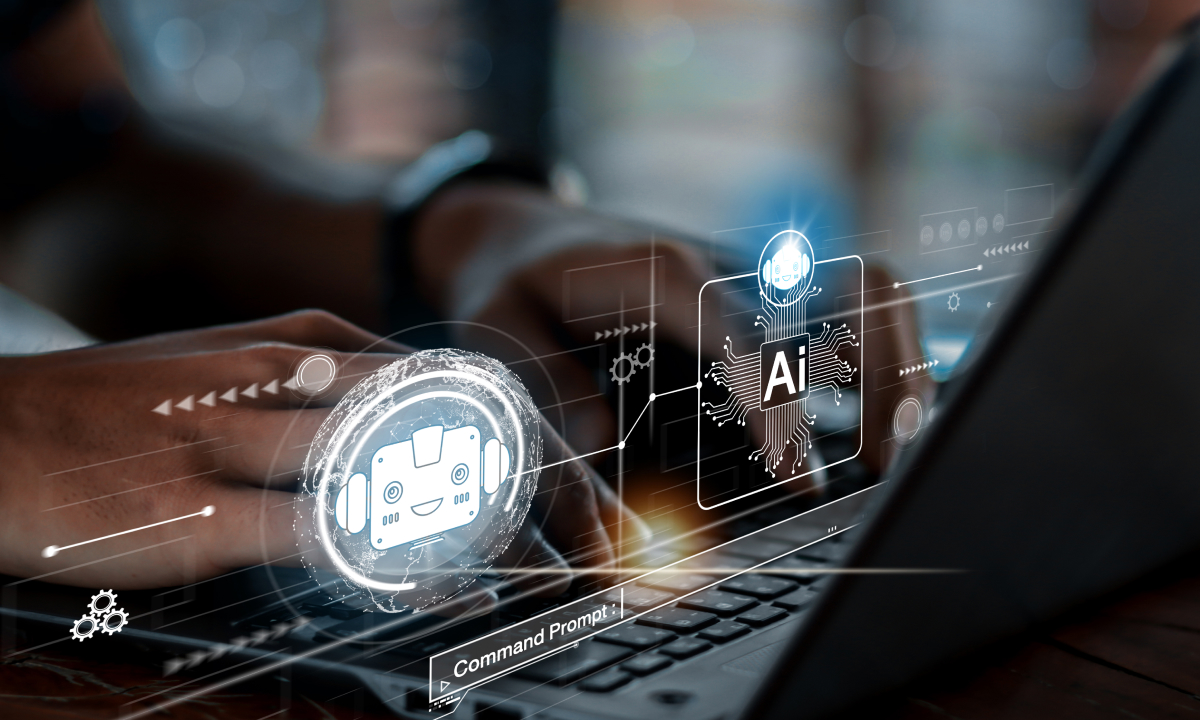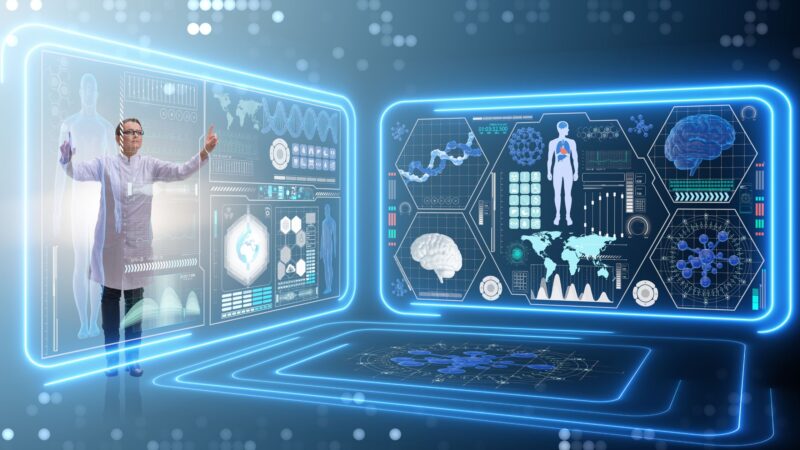Smart retail technologies are reshaping the retail landscape, offering a glimpse into a future where innovation and efficiency converge to create a seamless shopping experience. From IoT to AI, data analytics to AR/VR, robotics to automation, the possibilities are endless. Dive into this transformative world where technology meets retail!
Overview of Smart Retail Technologies
Smart retail technologies encompass the use of innovative solutions to enhance the shopping experience, streamline operations, and drive sales in retail stores. These technologies leverage data analytics, artificial intelligence, IoT devices, and other cutting-edge tools to create a more personalized and efficient retail environment.
Key Components of Smart Retail Technologies
- IoT Devices: Smart sensors and beacons enable real-time tracking of inventory, customer behavior, and store conditions.
- Data Analytics: Advanced analytics tools analyze customer data, sales trends, and operational efficiency to make informed decisions.
- Artificial Intelligence: AI-powered chatbots, virtual assistants, and personalized recommendations enhance customer interactions and engagement.
- Mobile Apps: Retail apps provide seamless shopping experiences, personalized offers, and convenient payment options for customers.
Benefits of Implementing Smart Technologies in Retail Stores
- Enhanced Customer Experience: Personalized recommendations, targeted promotions, and interactive displays improve customer satisfaction and loyalty.
- Improved Operational Efficiency: Automated inventory management, predictive maintenance, and data-driven decision-making optimize store operations and reduce costs.
- Increased Sales: Smart technologies enable retailers to better understand customer preferences, optimize pricing strategies, and drive impulse purchases.
- Data-driven Insights: Advanced analytics provide valuable insights into customer behavior, market trends, and operational performance, enabling retailers to make strategic decisions.
Internet of Things (IoT) in Retail: Smart Retail Technologies
The Internet of Things (IoT) has been a game-changer in the retail sector, revolutionizing the way businesses operate and interact with customers. By connecting physical devices and sensors to the internet, IoT technology enables retailers to gather valuable data, automate processes, and provide personalized experiences to customers.
IoT applications in smart retail technologies are diverse and impactful. For instance, retailers can use IoT devices to track inventory levels in real-time, optimize supply chain management, and even monitor customer behavior within stores. These applications not only streamline operations but also enhance the overall shopping experience for consumers.
Enhancing Customer Experience and Operational Efficiency, Smart retail technologies
- Smart Shelves: IoT-enabled shelves equipped with sensors can automatically track inventory levels and send restocking alerts to employees, ensuring products are always available to customers.
- Personalized Marketing: Retailers can leverage IoT data to create personalized marketing campaigns based on customer preferences and shopping habits, leading to higher engagement and sales conversion.
- Smart Checkout Systems: IoT devices such as self-checkout kiosks and mobile payment options speed up the checkout process, reducing wait times and improving customer satisfaction.
- Predictive Maintenance: IoT sensors can be used to monitor equipment and store conditions, allowing retailers to predict maintenance needs and prevent costly downtime.
Artificial Intelligence (AI) in Retail
Artificial Intelligence (AI) is revolutionizing the retail industry by providing innovative solutions to enhance customer experiences and streamline operations. In the realm of smart retail technologies, AI plays a crucial role in transforming traditional retail practices into more efficient and personalized experiences.
Role of AI in Smart Retail Technologies
AI-powered systems in retail utilize advanced algorithms and machine learning to analyze vast amounts of data in real-time. This enables retailers to gain valuable insights into customer preferences, behavior patterns, and trends. By leveraging AI, retailers can customize marketing strategies, recommend personalized products, and offer targeted promotions to enhance customer engagement and satisfaction.
- AI-powered chatbots and virtual assistants provide customers with instant support and personalized recommendations, enhancing the overall shopping experience.
- Predictive analytics algorithms help retailers forecast demand, optimize pricing strategies, and improve inventory management efficiency.
- AI-driven visual recognition technology can enhance security measures and streamline checkout processes through automated inventory tracking and product recognition.
Impact of AI on Inventory Management and Supply Chain Optimization in Retail
AI algorithms can analyze historical sales data, current market trends, and external factors to optimize inventory levels and prevent stockouts or overstock situations. By automating inventory management processes, retailers can reduce costs, minimize wastage, and improve overall operational efficiency.
- AI-powered demand forecasting tools help retailers predict consumer demand accurately, leading to optimized stocking levels and reduced excess inventory.
- AI-driven supply chain optimization algorithms enable retailers to streamline logistics, improve delivery times, and enhance overall supply chain performance.
- AI-enhanced route optimization algorithms can minimize transportation costs, reduce carbon footprint, and improve the sustainability of retail operations.
Data Analytics and Retail
Data analytics plays a crucial role in smart retail technologies, allowing retailers to make informed decisions based on insights derived from customer data.
Importance of Data Analytics in Retail
Utilizing data analytics in retail enables businesses to understand customer behavior and preferences, optimize inventory management, personalize marketing strategies, and enhance overall customer experience.
How Retailers Use Data Analytics
- Segmenting customers based on buying patterns to tailor marketing campaigns and promotions.
- Analyzing foot traffic data to optimize store layout and product placements.
- Forecasting demand to ensure sufficient stock levels and minimize out-of-stock situations.
Examples of Data-Driven Decision-Making in Retail Operations
- Personalized Recommendations: Online retailers like Amazon use data analytics to suggest products based on previous purchases and browsing history, enhancing the shopping experience for customers.
- Pricing Optimization: Retailers adjust pricing strategies based on data analysis to maximize profits and remain competitive in the market.
- Inventory Management: Utilizing data analytics helps retailers to efficiently manage inventory levels, reducing excess stock and minimizing losses from overstocked items.
Augmented Reality (AR) and Virtual Reality (VR) in Retail

Augmented Reality (AR) and Virtual Reality (VR) technologies are revolutionizing the retail industry by providing immersive and interactive shopping experiences for customers. These cutting-edge technologies have the potential to transform the way consumers engage with products and brands, both online and offline.
Enhancing the Retail Shopping Experience
AR and VR in retail are not just about creating a buzz; they are about creating a personalized and engaging shopping experience for customers. By leveraging AR and VR technologies, retailers can offer virtual try-on experiences, allowing customers to visualize how products will look on them before making a purchase. This not only enhances customer satisfaction but also reduces returns and boosts sales.
Virtual Try-On, Product Visualization, and Interactive Marketing
One of the key applications of AR and VR in retail is virtual try-on, where customers can virtually try on clothing, accessories, or even makeup through AR-powered mirrors or VR headsets. This feature not only saves time for customers but also provides a fun and interactive way to explore different products. Furthermore, product visualization using AR and VR allows customers to see detailed views of products in 3D, helping them make informed purchasing decisions. Interactive marketing campaigns leveraging AR and VR can create memorable brand experiences, driving customer engagement and loyalty.
Bridging the Gap Between Online and Offline Retail Experiences
AR and VR technologies have the potential to bridge the gap between online and offline retail experiences by providing a seamless shopping journey for customers. For instance, AR-powered mobile apps can enable customers to scan products in-store and access additional product information, reviews, or recommendations in real-time. This not only enhances the in-store experience but also encourages customers to make informed decisions. By integrating AR and VR into their omnichannel strategies, retailers can create a cohesive and engaging shopping experience that transcends physical and digital boundaries.
Robotics and Automation in Retail
Robotics and automation play a crucial role in revolutionizing the retail industry, enhancing efficiency, and improving customer experience. These technologies are transforming various aspects of retail operations, from inventory management to customer service.
Robots in Inventory Management
In retail, robots are being utilized to automate inventory management tasks such as stock counting, monitoring product levels, and tracking items in warehouses. These robots can move autonomously through aisles, scanning barcodes and RFID tags to ensure accurate inventory data in real-time.
Warehouse Operations Optimization
Robots are also transforming warehouse operations by streamlining processes such as picking, packing, and sorting of products. Automated guided vehicles (AGVs) and robotic arms are used to efficiently move and arrange items, reducing human error and increasing productivity.
Impact on Operational Costs
The integration of robotics and automation in retail leads to significant cost savings by reducing labor expenses, minimizing errors, and optimizing inventory management. Retailers can achieve higher operational efficiency and profitability by leveraging these technologies effectively.
FAQ Explained
How do smart retail technologies enhance customer experience?
Smart retail technologies enhance customer experience by providing personalized recommendations, streamlining checkout processes, and creating immersive shopping experiences through AR and VR.
What are the key benefits of implementing smart technologies in retail stores?
Implementing smart technologies in retail stores can lead to improved operational efficiency, better inventory management, enhanced customer engagement, and increased sales through personalized experiences.
How can data analytics benefit retailers in understanding customer behavior?
Data analytics can help retailers gain valuable insights into customer behavior and preferences, allowing them to tailor marketing strategies, optimize product offerings, and create targeted promotions to meet customer needs.






